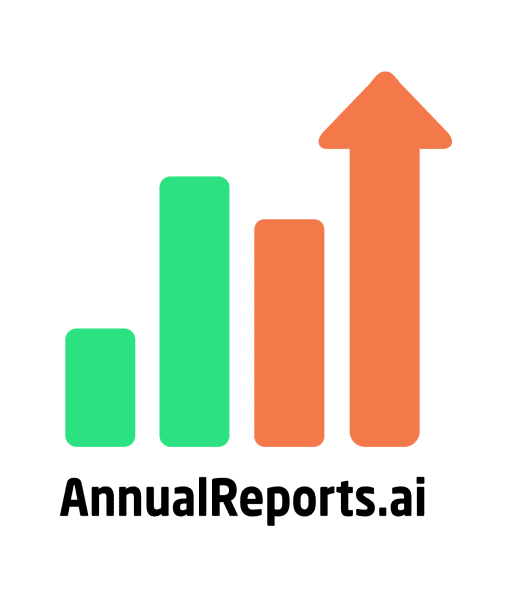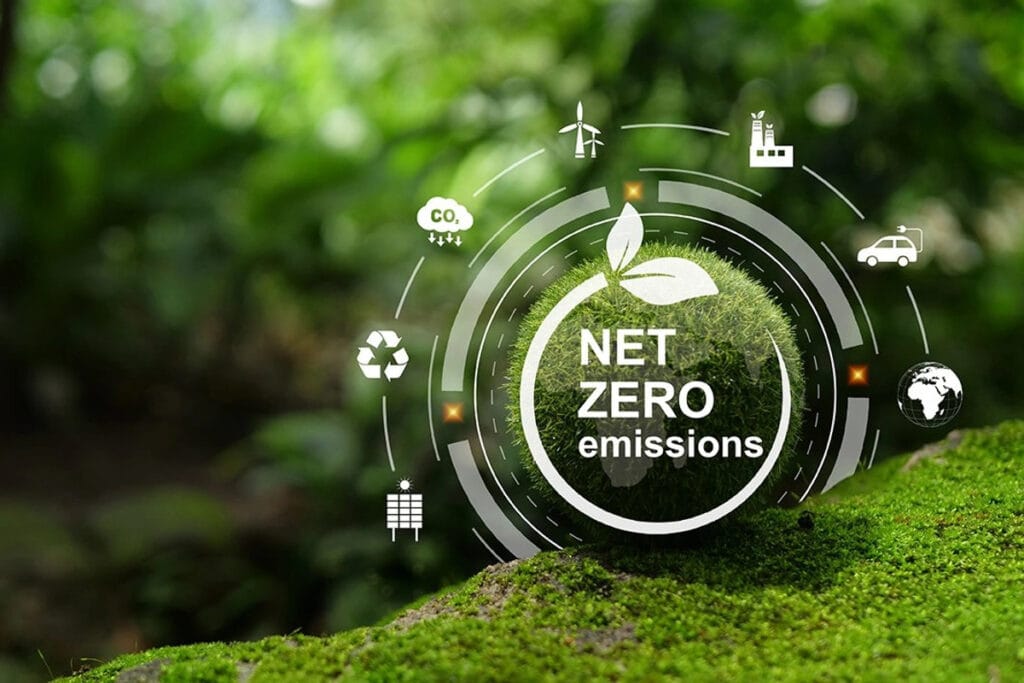As global expectations around sustainability continue to grow, global companies listed on major stock exchanges—especially those headquartered in regions such as Hong Kong, Singapore, the United Kingdom, South Africa, and the United States are now required to incorporate climate-related disclosures, especially carbon emissions into their annual reports to meet regulatory, investor, and stakeholder demands. This shift is being driven by the growing significance of the net-zero carbon emissions trend—a movement that calls for more than high-level pledges and demands tangible, transparent progress.
In this article, we explore why carbon disclosure has become a strategic priority in annual reporting, and how AnnualReports.ai, the leading AI-powered annual report generator, empowers companies to respond to evolving ESG standards and integrate net-zero objectives with speed, clarity, and regulatory alignment.
Key takeaways: Integrating net-zero carbon disclosures into annual reports
| Aspect | Summary |
|---|---|
| Why it matters | Net-zero carbon emissions have shifted from voluntary pledges to essential elements of corporate strategy and regulatory compliance. |
| Global regulatory context | Mandatory climate reporting standards are accelerating across Hong Kong, Singapore, the UK, South Africa, and the US, driven by frameworks such as ISSB, CSRD, and SEC regulations. |
| Investor expectations | Investors expect to see transparent and measurable climate disclosures, including Scope 1–3 emissions, reduction targets, and alignment with recognised ESG frameworks. |
| Common challenges | Global companies encounter challenges such as disconnected data sources, inconsistent methodologies, and limited coordination between sustainability and finance teams. |
| Checklist for integration | Comprehensive reports should include a net-zero commitment, emissions breakdown with methodology, climate risk strategy, governance structure, and relevant framework references. |
| How AnnualReports.ai streamlines reporting creation | AnnualReports.ai is a purpose-built solution that handles complexity while streamlining ESG reporting through pre-configured templates, AI-powered narratives, and real-time visual collaboration. It reduces reporting costs, boosts productivity, supports multilingual translations, and protects sensitive data with enterprise-grade security. |
Table of Contents
- Key takeaways: Integrating net-zero carbon disclosures into annual reports
- Understanding the net-zero carbon emissions trend
- The net-zero imperative in annual reports
- From financials to footprints: Evolving reporting priorities
- What stakeholders expect to see
- Common challenges in carbon disclosure integration
- Practical example and checklist for net-zero reporting integration
- How AnnualReports.ai streamlines ESG and carbon reporting
Understanding the net-zero carbon emissions trend
The term “net-zero carbon emissions” refers to achieving a balance between greenhouse gas emissions produced and those removed from the atmosphere. This concept gained global momentum with the signing of the Paris Agreement in 2015, where countries committed to limiting global warming to well below 2 degrees Celsius above pre-industrial levels. Net-zero became the benchmark target and now serves as the foundation for many national policies and corporate sustainability strategies.
For corporations, achieving net-zero means addressing emissions across their entire value chain. This includes operational emissions (Scope 1), purchased energy (Scope 2), and indirect emissions such as supplier and customer activity (Scope 3). As global climate commitments strengthen, net-zero carbon emissions have become a critical component of long-term business resilience.
The net-zero imperative in annual reports
As net-zero commitments move from voluntary pledges to regulatory expectations, companies are facing mounting pressure to demonstrate measurable progress in reducing their carbon footprint. Governments, investors, and regulatory authorities now expect transparent disclosures within formal reporting structures.
Institutions such as the IFRS Foundation (via the International Sustainability Standards Board, ISSB), the European Union (through the CSRD), and the Securities and Futures Commission (SFC) in Hong Kong are setting clear expectations for climate-related disclosures. Many companies are now required—or strongly encouraged—to include Scope 1, 2, and, where applicable, Scope 3 emissions within their annual reports.
In the United States, the Securities and Exchange Commission (SEC) has introduced climate disclosure requirements for listed firms, further expanding the global regulatory landscape. In South Africa, the Johannesburg Stock Exchange promotes sustainability transparency through integrated reporting practices aligned with the King IV Code.
What was once treated as an optional sustainability statement has become a fundamental part of investor due diligence. Annual reports are now a key disclosure format for communicating climate strategies, carbon metrics, and a company’s commitment to long-term resilience.
From financials to footprints: Evolving reporting priorities
Traditional annual reports focused almost exclusively on financial performance. However, during the past five years, leading companies have evolved through a profound transformation in how they approach annual reporting. Investors increasingly view non-financial data—particularly environmental impact—as material to long-term value.
The Task Force on Climate-related Financial Disclosures (TCFD) and frameworks such as the Global Reporting Initiative (GRI) and Sustainability Accounting Standards Board (SASB) have paved the way for structured, comparable carbon emission reporting.
In Hong Kong and Singapore, HKEX and SGX-listed companies are expected to report on climate-related risks and emissions in line with these frameworks. HKEK published its latest consultation conclusions which aim to serve as the global baseline of sustainability reporting standards for entities worldwide to prepare consistent, comparable and reliable sustainability disclosures.
South Africa’s King IV Code and the UK’s climate disclosure regulations reflect this global movement. In the European Union, the Corporate Sustainability Reporting Directive (CSRD) mandates a phased rollout of sustainability reporting standards that include carbon metrics and net-zero roadmaps.
What stakeholders expect to see
Stakeholders are no longer satisfied with vague sustainability language. They expect measurable, transparent, and comparable data. Key elements to include in a carbon-related section of an annual report include:
- Total Scope 1, 2, and where applicable, Scope 3 emissions.
- Year-on-year emissions comparison.
- Emissions intensity (e.g., per revenue or unit output).
- Climate risk assessment and scenario analysis.
- Emissions reduction targets and progress.
- Carbon offset strategy (if used).
- Board oversight and governance structure.
These disclosures must be more than statistics. Stakeholders want to understand how emissions data connects to overall strategy, operational risks, and future resilience.
Common challenges in carbon disclosure integration
While awareness of climate-related responsibilities is increasing, integrating carbon disclosure into annual reports remains a complex task for a wide range of companies. Difficulties typically arise from a mix of structural, operational, and reporting-related issues:
- Fragmented data sources: Emissions data is often dispersed across departments, business units, or third-party systems, making it harder to organise and validate.
- Inconsistent methodologies: Without clearly defined reporting practices or boundaries, emissions figures may lack accuracy or comparability.
- Manual workflows: Spreadsheet-based processes make it easier for errors to occur and harder to maintain consistency across teams.
- Limited coordination between finance and ESG teams: When sustainability and financial reporting functions are not fully aligned, inconsistencies can appear in both data and narrative.
These factors can delay reporting timelines, increase compliance risks, and reduce stakeholder confidence. To resolve these challenges, global companies require effective collaboration and a purpose-built tool that simplifies the reporting creation process.
Practical example and checklist for net-zero reporting integration
Consider an industrial firm working towards a net-zero carbon emissions target by 2045. Using AnnualReports.ai, the company centralises emissions data from multiple facilities and operational sites, then feeds this information into an AI-assisted reporting engine.
The platform generates narrative text that explains Scope 1 and Scope 2 emissions, compares year-on-year progress, and outlines a roadmap for achieving carbon neutrality. The report also includes forward-looking scenario analyses in line with TCFD guidelines. Stakeholders can review and comment in real time before final internal approval.
Through this simplified workflow, the company reduces manual reporting effort by up to 70%, eliminates duplication across sustainability and finance teams, and ensures disclosures are aligned with relevant regulatory frameworks.
For companies beginning their net-zero journey, the following elements should be incorporated into the carbon disclosure section of their annual report:
- A declared commitment to a net-zero target with a defined timeline.
- Scope 1, 2, and (where relevant) Scope 3 emissions reporting with clear methodology.
- Year-on-year emissions comparisons and intensity metrics (e.g., per revenue or output unit).
- Climate risk assessments and mitigation strategies.
- Progress updates on the decarbonisation roadmap.
- Use of offsets, credits, or removals if applicable.
- Referenced frameworks (such as TCFD or ISSB) used in the report.
- Governance structure overseeing climate strategy.
- Stakeholder engagement efforts and communication plans.
We recommend boards, and advisors to boards, look closely at HSBC’s ESG Reporting Centre and think of it as the gold standard for ESG reporting. Not all companies will need to go into such depth, but HSBC’s commitment to ESG standards is in our view second to none.
How AnnualReports.ai streamlines ESG and carbon reporting
As ESG standards evolve and net-zero targets become a key focus for investors and regulators, companies need a solution that can handle complexity while streamlining the process of integrating carbon disclosures into annual reports, as outlined below:
- Pre-configured templates aligned with global ESG frameworks, including TCFD and ISSB.
- AI-powered narrative generation tailored to uploaded carbon data and disclosures.
- Human-quality language refinement, ensuring clarity, consistency, and professional tone.
- Real-time visual collaboration for seamless internal reviews and stakeholder approvals.
- Multilingual translations to support region-specific report versions and cross-border communication.
By simplifying each step of the workflow, AnnualReports.ai empowers businesses to reduce reporting costs and boost productivity through real-time collaboration across teams. Built with enterprise-grade security and strict privacy protocols, the platform also ensures that sensitive financial and sustainability data remain protected throughout the reporting process.
Or talk to us about your requirements.

